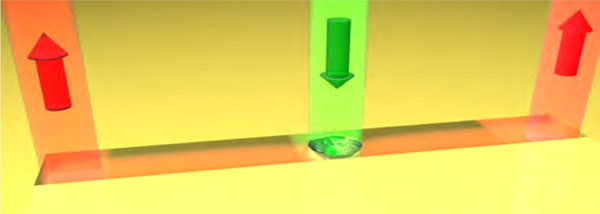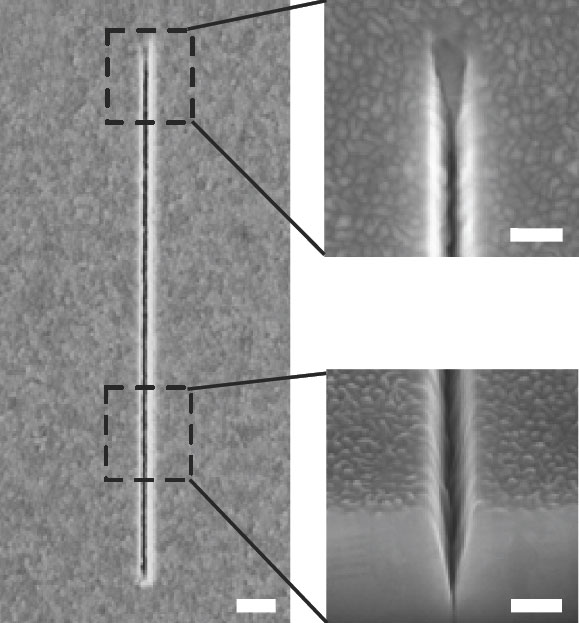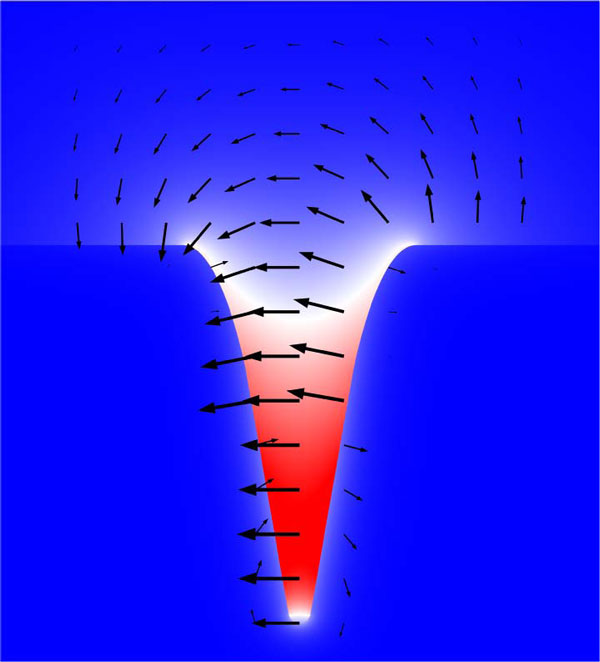Figure I: Schematic of the considered configuration. A single nanodiamond hosting a single nitrogen vacancy centre (NV) is placed inside a V-groove channel waveguide. On excitation with a laser, the NV center couples, in ideal case, all of its emission into the VG-supported CPP mode. The channeled emission out-couples from the VG via the tapered nanomirrors at the VG extremities.
Figure II: Scanning electron microscopy (SEM) image of a 10-mm- long V-shaped groove (B315-nm-width and B510-nm-depth) fabricated by milling a thick gold film with a FIB. The scale bar is 1 mm.
Figure III: Total electric field profile of the VG-supported CPP mode for a wavelength of 650 nm as calculated with COMSOL software.
Coupling of individual quantum emitters to channel plasmons
Motivation of the modeling
One of the main challenges in developing future nanoscale quantum photonic circuits is to manage combining on a single chip a single photon source, waveguides,
modulators and detectors. An important milestone towards this ultimate goal is the deterministic coupling of a single quantum emitter to an integrated waveguide.
Achievements of the model
We first used numerical simulations to model the coupling between a quantum emitter and the V-groove plasmonic channel. Once an optimal theoretical configuration was identified, the experimental team used state-of-the-art techniques to assemble the structure using a single nitrogen vacancy centre, a single quantum emitter present in diamond, coupled to the channel plasmons supported by a V-groove channel. The observations obtained from the experiment revealed
efficient coupling of the NV centre emission to the propagating modes of the V-groove, in accordance with the theoretical predictions postulated by the theoretical team.
Model system/Software
Electromagnetic calculations were performed using a Finite Element Method as implemented in the COMSOL multiphysics tool.
The following key information was provided by the numerical simulations:
- Optimum geometry for the V-groove (aperture angle and depth) for carrying channel plasmons at the emission frequency of the quantum emitter, i.e., nitrogen vacancy.
- Optimum location of the nitrogen vacancy inside the V-groove for which the coupling with the channel plasmon supported the V-groove is maximum.
Francisco J. García Vidal, part of the SIMUNE´s board of experts is one of the authors of this work.





